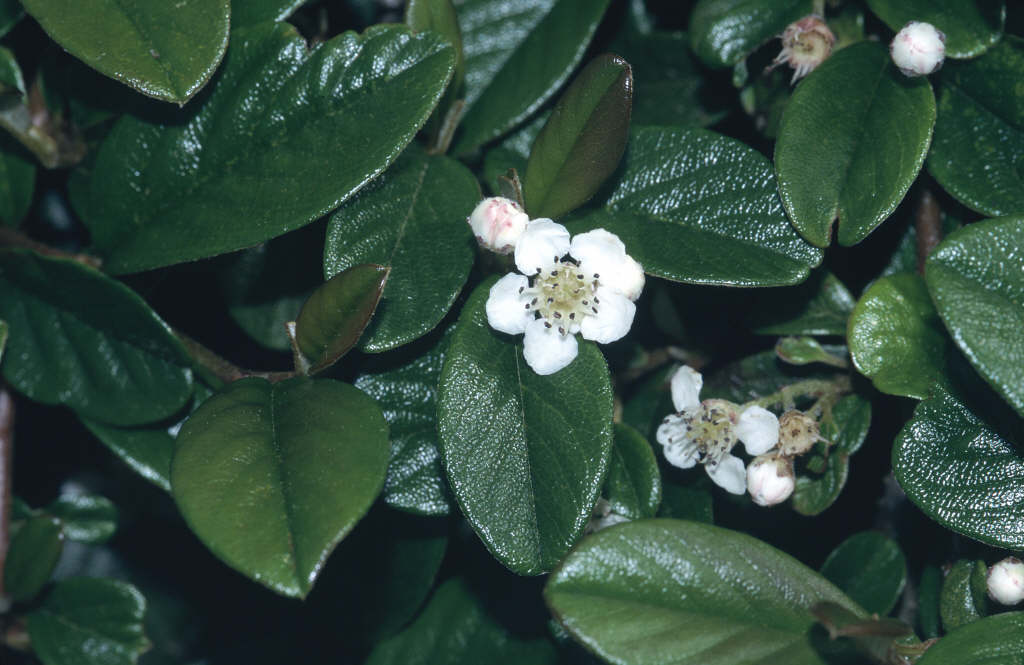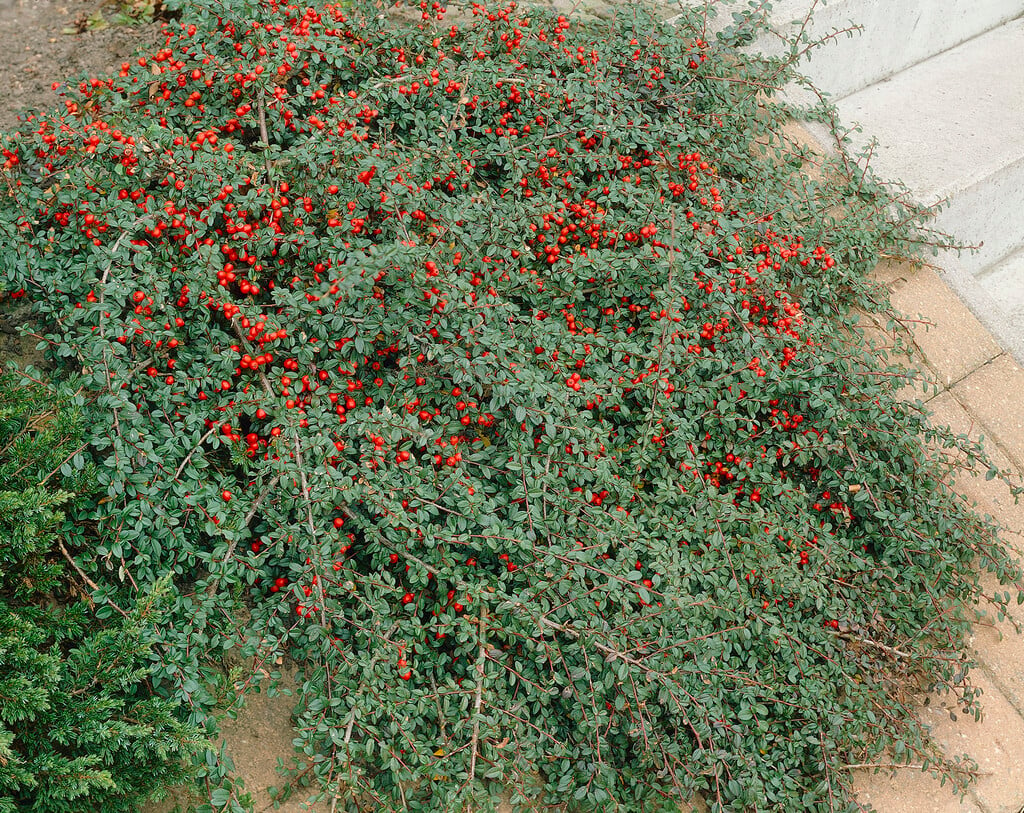Cotoneaster dammeri
bearberry cotoneaster
Vigorous, prostrate evergreen shrub about 20cm tall, spreading to 2m, with small, oval, veiny leaves to 4cm long, and small white flowers in small clusters or singly, in early summer, followed by bright red berries
Size
Ultimate height
0.1–0.5 metresTime to ultimate height
5–10 yearsUltimate spread
1.5–2.5 metresGrowing conditions
Moisture
Well–drainedpH
Acid, Alkaline, NeutralColour & scent
| Stem | Flower | Foliage | Fruit | |
| Spring | Green | |||
|---|---|---|---|---|
| Summer | White | Green | ||
| Autumn | Green | Red | ||
| Winter | Green |
Position
- Full sun
- Partial shade
Aspect
North–facing or South–facing or West–facing or East–facing
Exposure
Sheltered Hardiness
H6Botanical details
- Family
- Rosaceae
- Native to GB / Ireland
- No
- Foliage
- Evergreen
- Habit
- Matforming
- Potentially harmful
- Fruit are ornamental - not to be eaten. Wear gloves and other protective equipment when handling. Pets: Fruit are ornamental - not to be eaten - see the HTA guide to potentially harmful plants for further information and useful contact numbers
- Genus
Cotoneaster can be deciduous or evergreen shrubs or small trees, with simple, entire leaves and clusters of small white or pink flowers in spring and summer, followed by showy red, purple or black berries
- Name status
Correct
- Plant range
- China (Hubei)
How to grow
Cultivation
Grow in any well-drained soil in full sun or partial shade, with shelter from cold winds
Propagation
Propagate from seed (tree/shrub) or semi-ripe cuttings in late summer
Suggested planting locations and garden types
- Cottage and informal garden
- Wildlife gardens
- Low Maintenance
- Banks and slopes
- Ground cover
Pruning
Pruning group 8 if necessary, in mid or late summer, back to the nearest fading flowers or berry cluster
Pests
May be susceptible to aphids, woolly aphid, scale insects and cotoneaster webber caterpillar
Diseases
May be susceptible to fire blight and honey fungus
Love gardening
Sign up to receive regular gardening tips, inspiration, offers and more
View our Privacy Policy
Get involved
The Royal Horticultural Society is the UK’s leading gardening charity. We aim to enrich everyone’s life through plants, and make the UK a greener and more beautiful place.

